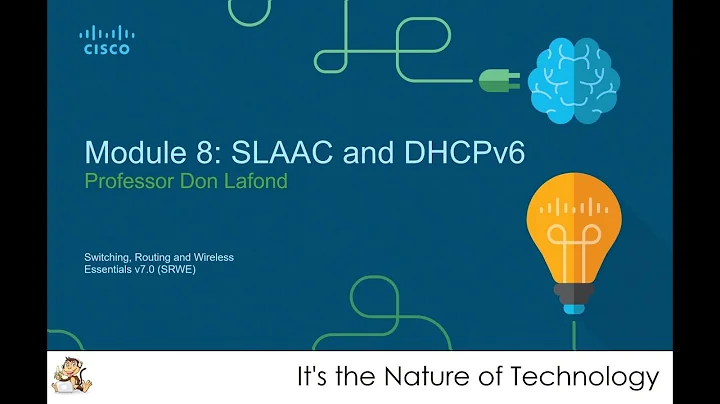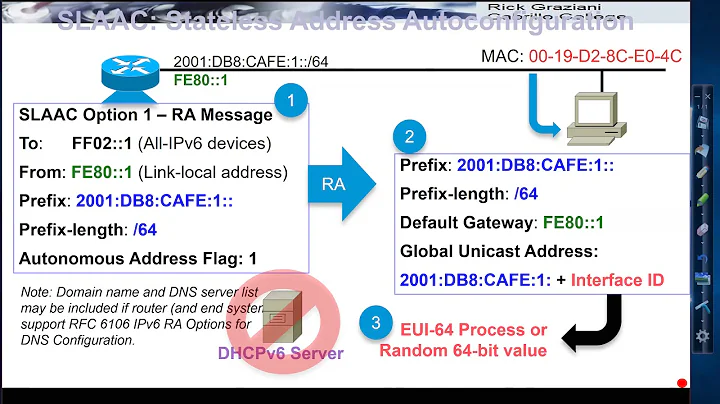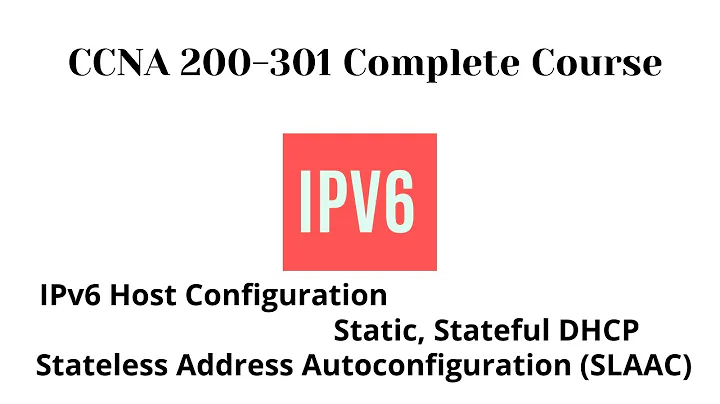SLAAC and DNS, no really - what's the deal?
Solution 1
The original (and still valid) idea is to combine IPv6 addresses with SLAAC/autoconf with Router Advertisements (RA's), combined with Stateless DHCPv6 for all other options like DNS. This makes the DHCPv6 server very simple because it doesn't have to maintain a leases database and things like that. It only needs to tell the client all the extra options like DNS domain and resolver.
Solution 2
The IPv6 design was pretty academic at its inception, I would look at the IETF IPng working group mailing list and doucment archives if you want the whole story. But the charter was to replace just the IP layer, leaving all of the higher-layer protocols to others. Remember that IPv4 didn't have DHCP, BOOTP, or even DNS until many years after deployment. Getting those things to work on IPv6 was left to other IETF groups.
The other IETF groups didn't exactly jump on the IPv6 bandwagon right away, nor did vendors, implementers, ISPs, network admins, or anyone else. So now we have a right mess on our hands.
Related videos on Youtube
bab
Updated on September 18, 2022Comments
-
bab over 1 year
So I know that there are extensions to SLAAC in the works to enable DNS discovery via RAs (RFC 6106). But what was the original intent? How did the IPv6 designers envision things working without DNS? Why did multicast DNS get dropped from Windows? I can find lots of info on SLAAC, its lack of DNS support, and the SLAAC/DHCPv6 debate (and the proposed, and yet unsupported, extension) but no discussion of the original rationale.
-
bab almost 12 yearsSo why did they include SLAAC, then?
-
J. Singh almost 12 yearsI don't think SLAAC came in until later in the IPv6 development process, but even so it only deals with the IP layer, and nothing else. Additions to SLAAC that include non-IP information (such as DNS) are very recent
-
Sander Steffann almost 12 yearsNot really... RA's contain routing and addressing information, and DHCPv6 contains all other options (and optionally also addressing). Later some DNS information was added to the RA (RFC5006/RFC6106). That was the after-the-fact addition, not DHCPv6. If you want maximal compatibility you can do both RFC6106 and (stateless) DHCPv6. Then the operating system can choose what to use, depending on what it supports.
-
Zan Lynx over 6 yearsThe original idea I heard was well-known local net IPs and/or DNS multicast.




